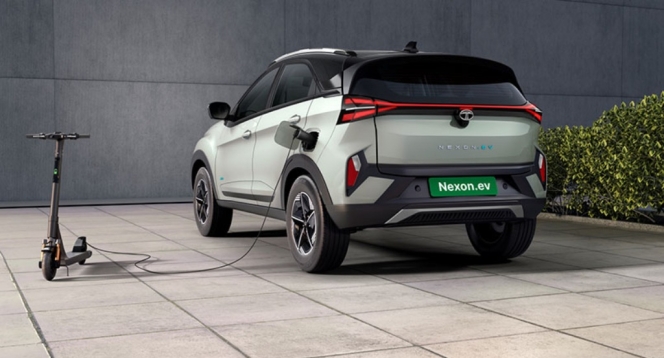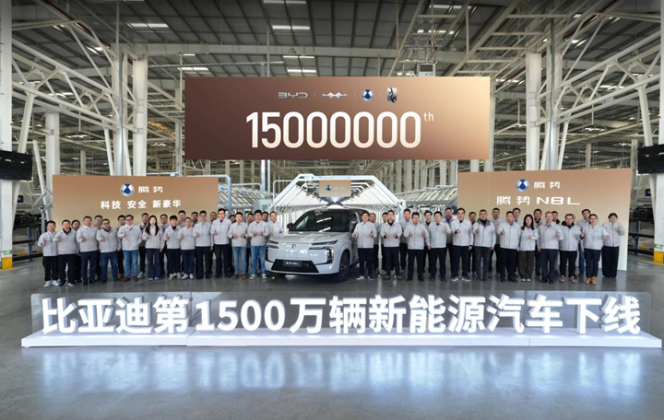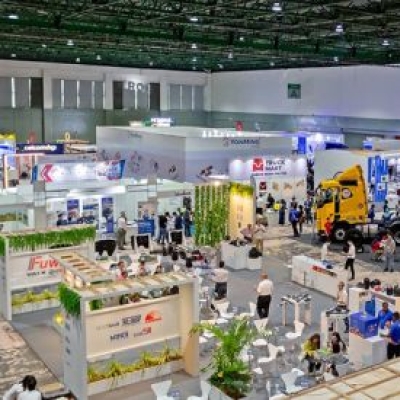- International Centre for Automotive Technology
- Dr Mahendra Nath Pandey
- Krishan Pal Gurjar
- Narendra Modi
- Nirmala Sitharaman
- Kamran Rizvi
- MHI
- NITI Aayog
- MoRT&H
- MoP
- MoP&NG
‘Towards Panchamrit’, Meant for Auto Sector Development, Inaugurated
- By MT News
- February 04, 2023

The Union Minister for Heavy Industries, Dr Mahendra Nath Pandey, today inaugurated ‘Towards Panchamrit’ – Conference & Exposition on MHI schemes for the promotion and development of the automotive industry in the country, at the International Centre for Automotive Technology (ICAT), in Manesar, Haryana. The government is giving a major push to clean fuels in order to drive India towards cleaner mobility. The ‘Towards Panchamrit’ event is an effort in this direction to promote the adoption of ‘Panchamrit’, that are the five clean fuels – hydrogen, ethanol, bio-diesel, gas and electric vehicles. Dr Pandey and MoS Heavy Industries, Krishan Pal Gurjar, also inaugurated the exposition and ICAT Incubation Centre.
The event was attended by automotive industry leaders, senior government officials from MHI, NITI Aayog, MoRT&H, MoP, MoP&NG, senior academicians, start-ups and students. The exposition had displays from over 84 companies, which included 33 component manufacturers, 11 companies from testing equipment manufacturers and 36 vehicle manufacturers. Around 1,500 automotive professionals participated in the event.
Dr Pandey emphasised that in line with the Prime Minister, Narendra Modi's announcements at COP 26 – ‘Panchamrit Ki Saugat’, five commitments to achieve the vision of becoming a carbon-neutral country by 2070, the ministry is making comprehensive efforts to move towards fulfilling this vision. He further said that the government has abolished duty on vehicles brought in by international automakers for testing purposes in the country, which earlier attracted duties of 252 percent. He states that this will attract automakers from more countries to avail the testing facilities available in the country, and expressed his gratitude to the Prime Minister as well as the Finance Minister, Nirmala Sitharaman, for this.
Gujjar highlighted the initiatives taken by the ministry to promote clean and green mobility. He said that these initiatives will give a boost to domestic manufacturing, help in employment generation, reduce the dependence on exports, promote the growth and development of the industry and thereby, help achieve the vision of Atmanirbhar Bharat in the automotive industry.
Secretary, Kamran Rizvi, said that the Ministry of Heavy Industries, through its schemes PLI ACC, PLI Auto and FAME II, is taking directed action towards driving India towards cleaner mobility. Rizvi also highlighted that in the last five years, the country has adopted EV technology at a very fast pace. He asked the industry to avail the benefits of MHI schemes and expressed confidence that the Indian automotive industry will make a place for itself in the world market.
At the event, there were technical sessions on developing technologies for hydrogen, EVs, biofuels and gas-fueled vehicles. The speakers from the automotive industries gave presentations on new cutting-edge technologies and the way forward to achieve the vision of Atmanirbhar in the industry. The conference deliberations also brought out policy and regulatory ecosystem for the faster adoption of these new technologies. Plus, a dedicated session was organised where representatives of the automotive industry discussed and shared suggestions with officials for the successful implementation of these schemes.
Besides this, dignitaries visited test facilities and the certification infrastructure available at ICAT. These state-of-the-art facilities will help in the development of technologies and certification of automotive products. Over 10 start-ups displayed products which they claim will become market-ready with the support of ICAT facilities.
Chartered Speed Deploys Electric Buses For DCM Shriram Staff Transport
- By MT Bureau
- December 24, 2025

Chartered Speed has deployed 11 electric buses for staff transportation for DCM Shriram at Jhagadia GIDC, Bharuch. The service was inaugurated by Sanyam Gandhi, Whole-time Director at Chartered Speed and Aditya Shriram, Deputy Managing Director at DCM Shriram.
The deployment is part of an effort to shift employee mobility towards electrification. Chartered Speed operates a fleet of over 2,000 buses across six states, serving 350,000 passengers daily.
The electric buses are equipped with several technologies for fleet management and passenger safety. It comes with real-time GPS tracking and onboard Driver Monitoring Systems (DMS). CCTV cameras, fire protection systems and first-aid kits are installed in every vehicle.
The company currently provides school and staff transportation services to various clients, including GHCL Limited and Apple Global School.
Sanyam Gandhi, Whole-time Director, Chartered Speed, said, “With the recent deployment of electric buses, we are strengthening our commitment to reducing the carbon footprint of our operations and supporting the transition to greener transportation solutions. Our vision is of building a large, clean energy-powered fleet that aligns with global trends towards electrification in public transport. We remain focused on integrating technology in our services not only enhances operational efficiency but also fosters a culture of safety that we believe is essential for the future of transportation.”
- Tata Motors
- TATA.ev
- Nexon.ev
- Tiago.ev
- Curvv.ev
- Harrier.ev
- XPRES-T EV
- Shailesh Chandra
- Sierra.ev
- Punch.ev
- Avinya
- Agratas
Tata Motors Surpasses 250,000 EV Sales In India
- By MT Bureau
- December 23, 2025

Tata Motors, one of the leading passenger vehicle manufacturers in the country, has attained a new milestone in the Indian electric vehicle (EV) market, with cumulative sales of its TATA.ev range exceeding 250,000 units.
Since the launch of the Nexon.ev in 2020, the company has secured a 66 percent market share of all electric passenger vehicles sold in India to date. The Nexon.ev has become the first electric model in the country to surpass 100,000 cumulative sales.
At present, the company’s green vehicle offering includes the Tiago.ev, Punch.ev, Nexon.ev, Curvv.ev and Harrier.ev for personal use, alongside the XPRES-T EV for fleet operations.
To support its EV customers, Tata Motors has established an ecosystem, which includes access to over 200,000 charging points, including home, community and public chargers. A digital platform providing coverage for over 20,000 public chargers. Around 100 mega charging hubs operational across key corridors, offering speeds of more than 120kW. Approximately 1,500 dedicated EV service bays nationwide, staffed by over 5,000 technicians.
The automaker stated that every TATA.ev vehicle is manufactured with more than 50 percent local content. In collaboration with other Tata Group companies, the firm has localised the production of battery packs and battery management systems. The supply chain also includes domestic production of power electronics, wiring harnesses and thermal management systems.
Going forward, Tata Motors has outlined a robust growth strategy through to 2030:
- Upcoming Launches: The Sierra.ev and a new Punch.ev are scheduled for release in CY26, followed by the Avinya luxury range at the end of 2026.
- Portfolio Growth: Five new nameplates are planned by FY2030.
- Infrastructure Targets: The company aims for 400,000 charge points by CY2027 and 1 million by 2030.
- Battery Sourcing: Future models will use battery cells produced at the Agratas gigafactory in Sanand.
Shailesh Chandra, MD & CEO, Tata Motors Passenger Vehicles, said, “Crossing 250,000 EV sales reflects how electric mobility is fast becoming part of everyday Indian life. Our customers are driving more, travelling farther, and increasingly trusting EVs as their only cars. Our EV journey which began in 2018, was never about leading alone but about building the ecosystem to enable India’s transition to clean mobility. This progress is the outcome of the government’s forward-thinking policies, the steadfast support of our supplier partners and charging infrastructure providers and above all, the trust and enthusiasm of TATA.ev customers. As EV adoption accelerates, our commitment remains clear: to mainstream electric mobility by making it accessible across segments, strengthening the ecosystem, and investing in India-first technology and localization. This is how we will continue to lead India’s growing EV market.”
The company also intends to focus on the circular economy by reusing batteries for energy storage and providing battery health checks for second-hand owners.
Forsee Power To Supply ZEN LFP Battery Systems To Mexico's MegaFlux
- By MT Bureau
- December 22, 2025

French-headquartered battery systems manufacturer Forsee Power has announced that MegaFlux, a Mexico-based powertrain integrator, has selected its ZEN LFP battery system for its heavy vehicle electric powertrains.
MegaFlux develops electric powertrains for trucks and buses, including retrofit solutions that convert diesel vehicles to electric. The company also provides charging infrastructure and energy management services.
The ZEN LFP product line uses lithium-ion LFP chemistry and is designed for buses, trucks and off-highway vehicles. The batteries are available in 36 kWh and 55 kWh formats, allowing for various voltage and energy combinations. The LFP battery has an energy density of 240 Wh/L. Being a modular system, upto to two modules can be stacked to optimise vehicle space. The battery has 6,000 charging lifecycle and is ISO 26262 ASIL-C and industry standards including R100-3 and R10.6 certified.
The use of LFP (Lithium Iron Phosphate) chemistry is intended to provide a lower Total Cost of Ownership (TCO) for operators due to its thermal stability and cycle life, factors that are relevant to the operating conditions in markets such as Mexico.
MegaFlux will integrate the ZEN LFP batteries into powertrains sold to original equipment manufacturers (OEMs) and into its vehicle conversion projects.
BYD Rolls Out 15 Millionth New Energy Vehicle As Global EV Sales Rise
- By MT Bureau
- December 19, 2025

Chinese automotive major BYD has celebrated the production of its 15 millionth new energy vehicle (NEV) at its Jinan Factory. The milestone vehicle is a Denza N8L, which also represents the 15,000th unit of this six-seat SUV model.
The company reported sales of 4.182 million units from January to November 2025, a YoY growth of 11.3 percent. Global markets contributed to this performance, with overseas sales reaching 917,000 units, surpassing the total volume recorded in 2024. BYD now operates in more than 119 countries and regions.
Technological innovation continues to drive the company's operations. In the first three quarters of 2025, R&D expenditure rose to CNY 43.75 billion, a 31 percent increase compared to the previous year. Total cumulative investment in research and development has now exceeded CNY 220 billion.
The Denza brand has entered markets in Singapore, Thailand and Malaysia. During the first half of the year, the Denza D9 became the top-selling luxury MPV in Indonesia, Thailand and Malaysia.
The brand has extended its presence into Europe and Latin America. This expansion is part of a strategy to increase the electrification of the global luxury automotive sector. Denza recently showcased the D9 at the São Paulo International Motor Show to support its growth in the region.






Comments (0)
ADD COMMENT